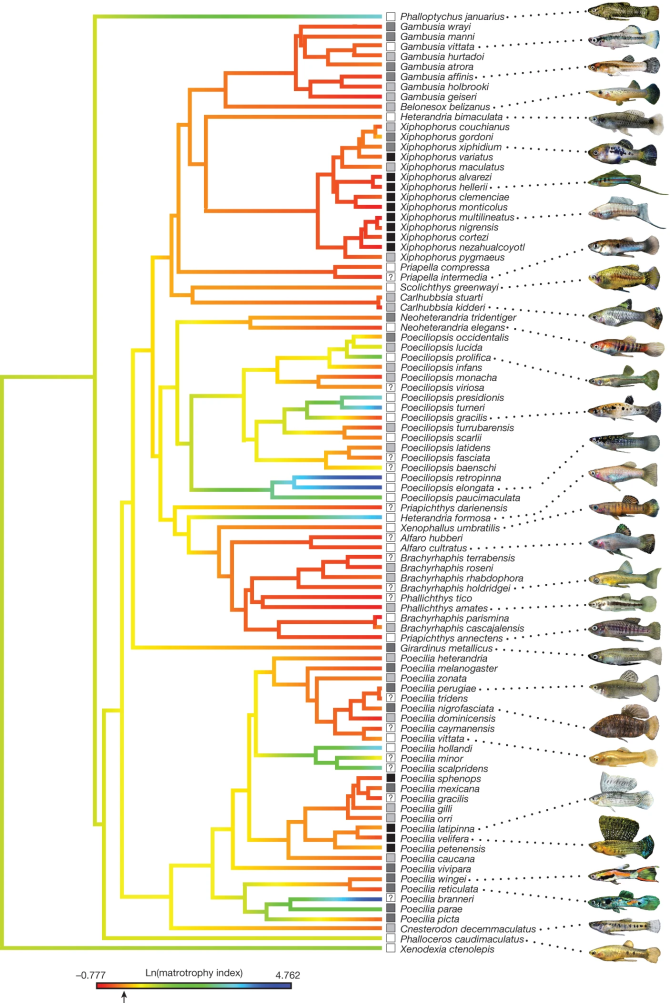
Project
Why does a mother not reject her developing offspring during pregnancy?
The placenta is a highly complex organ that regulates the physiological exchange between mother and fetus. At the same time foreign paternal proteins (antigens) are present along this maternal-fetal interface. As a result, an immune response followed by rejection of the partly foreign fetus and placenta should be expected, but this does not occur during a healthy pregnancy.
This reproductive enigma suggests that the female’s local immune system must have co-evolved with the placenta to protect the developing fetus. However, it is currently unknown how or when this complex local immune system developed during the evolution of the placenta.
The aim of this project is to elucidate the immunological changes that enabled the evolution of placental pregnancies. We will study the evolution of maternal immune tolerance in the live-bearing fish family Poeciliidae. In this family placentas have independently evolved multiple times. Moreover, there is remarkable diversity in placental complexity among closely related species, ranging from live-bearing species that lack placentas (i.e., lecithotrophic viviparity) to species with intermediate and highly evolved placentas (i.e., placentotrophic viviparity) (Figure 1).
We will compare the permeability, histology, and presence of immune cells in the maternal-fetal interface of closely related species with different degrees in placental complexity. We hypothesize that a higher degree of placentation is associated with more direct physiological interaction between mother and fetus during pregnancy and therefore the maternal-fetal interface should be more permeable. Subsequently, we expect that a higher degree of permeability will correlate with a higher complexity of the local immune system.

Reference
Pollux BJA, Meredith RW, Springer MS & Reznick DN (2014) The evolution of the placenta drives a shift in sexual selection in livebearing fish. Nature 513:233-236.